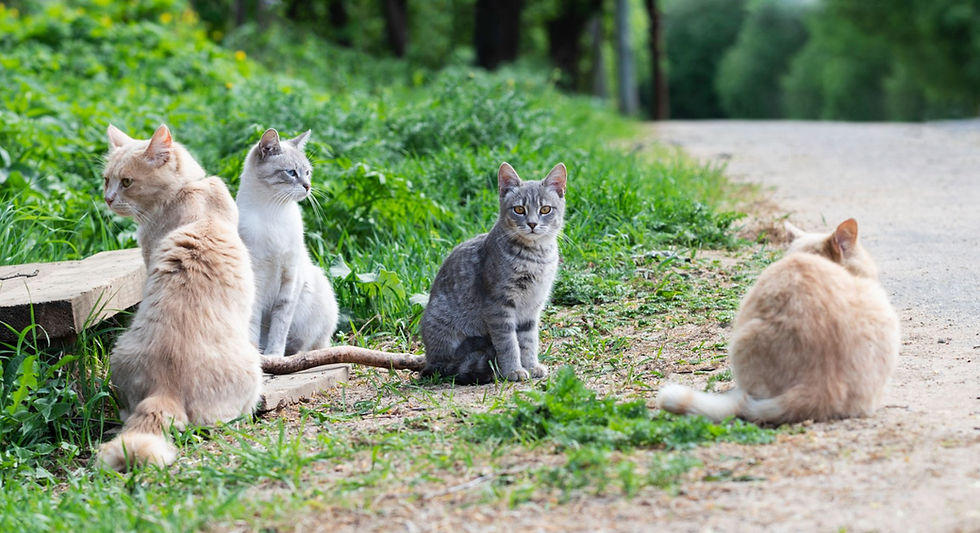Feral Cats of Erwin/Unicoi: A Local Initiative for Real Impact
- Louise Bailey
- Jul 23
- 2 min read

Feral cats are a visible part of our community in Erwin, TN — yet many people don’t realize just how quickly an unmanaged colony can grow. Left unspayed and unneutered, a single pair of cats and their offspring can produce thousands of kittens in just a few years.
That’s why we’ve launched a new effort to track, support, and humanely manage local feral cat colonies through Trap-Neuter-Return (TNR). We’re combining data collection, volunteer coordination, and public education to create a community-driven solution.
What We’re Doing Now
Colony Mapping: We launched a local Cat Colony Map where residents can report colonies. This helps us track locations, size, clusters and revisit areas for follow-up TNR work.
Data Collection: Every report helps build our case for funding and support. We track how many times a location is reported and gather details on the size and behavior of colonies.
Volunteer Base: We have a team of volunteers ready to help trap, transport, and care for feral cats.
Seeking Guidance: We are actively reaching out to experienced TNR groups and experts to help us build a sustainable plan.
In Search of a Holding Location: We need a dedicated space—like a vacant barn or building—where cats can recover post-surgery for 24–72 hours before being returned to their colonies.

How You Can Help
Volunteer to help trap or transport
Donate funds or supplies
Share your barn, garage, or shed for short-term recovery housing
Spread the word
Email unicoianimalwelfare@gmail.com if interested in volunteering or donating. This is a real way to make a difference. Feral cats deserve humane treatment, and we all benefit when colonies are stabilized and vaccinated.

Let’s work together to make Erwin a model of compassionate, community-powered care.
🌟 TNR Success Stories from Around the World
✔ Project Bay Cat – Northern California
Volunteers reduced a colony from ~175 cats to just a handful over ten years—more than 90% population decline—through sustained TNR, foster adoption, feeding station management, and public outreach. https://en.wikipedia.org/wiki/Project_Bay_Cat
✔ San José, California
A four-year citywide TNVR program saw a 29% drop in shelter intake and a reduction of euthanasia rates from over 70% to just 23%. https://bestfriends.org/pet-care-resources/community-cat-trap-neuter-vaccinate-return-tnvr-success-stories
✔ Newburyport, Massachusetts
Community members launched the Merrimack River Feline Rescue Society in 1992. Over 17 years, they reduced and virtually eliminated an estimated 300-cat waterfront population. https://pmc.ncbi.nlm.nih.gov/articles/PMC5704110/
✔ Collierville, TN (near Memphis)
The local shelter embraced TNR and decided to house cats on-site to control rodents—turning “Nuisance cats” into a working rodent patrol after spaying/neutering. https://humanepro.org/magazine/articles/yes-our-backyard
✔ Jakarta, Indonesia (AP News feature)
Thousands of community cats are being trapped and sterilized by volunteer-run TNR efforts, reducing aggression and territorial fighting, ultimately improving public safety and animal welfare. https://apnews.com/article/indonesia-jakarta-stray-cats-tnr-3fb46b3c8b6bf6ef40d815ba9501b851
✔ Working Cats Program (Los Angeles)
Feral cats are relocated to businesses and campuses suffering from rodent infestations. Once neutered, vaccinated, and acclimated, they live permanently onsite—effectively and humanely controlling rodent populations.



Comments